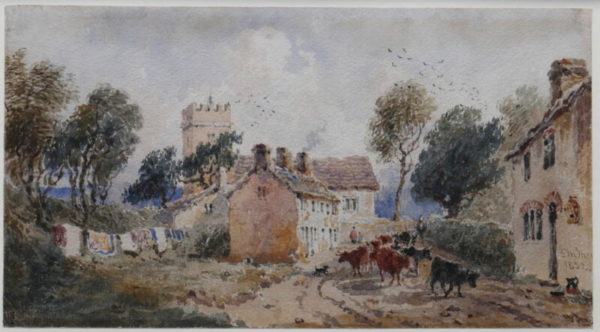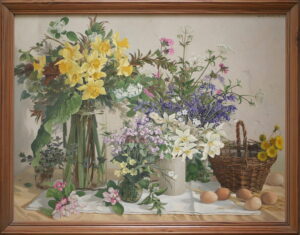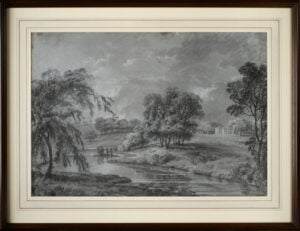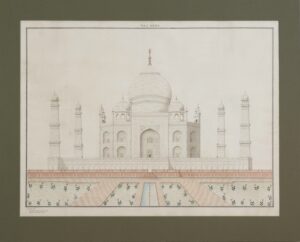Ince, Joseph Murray (1806-1859)
A pupil of David Cox during his time in Hereford, Joseph Murray Ince became a painter in oil and watercolour and produced native landscapes and coastal scenes, as well as views of towns both British and Continental. Though Ince was long considered to be of Welsh birth, recent researches confirm that both his birth and his outlook were more cosmopolitan.
Joseph Murray Ince was born in London in April 1806 and christened Josef-Marie Ince. His father was Dr Henry Robert Ince, who came from a family of skilled craftsmen, though he trained as a doctor and worked as a military surgeon; while his mother was Anne-Elisabeth, daughter of Comte le Jeune, an émigré from Revolutionary Paris. At the time of his birth, the family was living at Upper Grafton Street.
Soon after Ince was born, his father was invited by an old friend to set up as a general practitioner in Presteign, Radnorshire, Wales. The family rented Roseland, Broad Street, and Ince attended John Beddoes Free Grammar School. During his childhood, he befriended John Scarlett Davis of Leominster who, like him, shared his passions for fishing and painting and would develop as an artist.
Ince studied under David Cox in Hereford from December 1823 until early 1826 – and his watercolours of the 1830s and 1840s show his teacher’s influence.
In 1826, Ince moved to London and lived at 31 King’s Street, off the Edgware Road, possibly lodging with his uncle, Charles Ince, a former cabinet-maker. Almost immediately, he became an occasional exhibitor at the Royal Academy of Arts (1826-47) and the British
institution, and a frequent exhibitor at the Society of British Artists (showing 138 works in its Suffolk Street galleries between 1826 and 1858). Early exhibits included south-coast seascapes (from 1828) and views of Stockholm (from 1829), as well as scenes of Herefordshire and Radnorshire, suggesting that he had opportunities to travel.
Ince decided to build on some good sales and a developing reputation by publishing a set of seven lithographs, which appeared in 1832 as Views Illustrating the County of Radnor. The original paintings on which these were based appeared among his exhibits at the Society of British Artists in 1833.
On 12 June 1834, Ince married Sarah Phillips (the daughter of a Presteign painter and decorator) at St Mary’s Church, Marylebone, the parish in which he was residing. They celebrated their marriage with a honeymoon-cum-sketching trip that seems to have taken in Devon, Bristol, Oxford and Cambridge, as well as a visit home to Presteign. When Sarah became pregnant in the autumn, they travelled back to Presteign but, unfortunately, both she and their premature son died the following summer.
From that time, and for more than a decade, Ince shared his time between London and Presteign, while travelling widely. His London addresses were 48 George Street, near Portman Square – until 1841 – and then 9 George Street. He visited Oxford (1836), Wales (1839-40), possibly Holland and Germany (1839-40) and certainly Cambridge (1842-43). The Cambridge Portfolio, edited by the Reverend J J Smith, and published in parts between 1838 and 1840, included an illustration by Ince, probably based on drawings he had made during his first visit to the town.
On the death of his father in 1849, Ince became the executor of his estate and organised the sale of the contents of Roseland (including a number of significant paintings by John Crome and other artists). He also became legal guardian of his young half-brother, Edward Ince Young.
On leaving Presteign, Ince seems to have travelled in Italy and Spain (again suggested by exhibited paintings). He then took up residence at 12 King’s Parade, Cambridge, while retaining an address in London. He would die at his London home on 24 September 1859.
His work is represented in numerous public collections including the British Museum and the V&A; and The Fitzwilliam Museum (Cambridge).



